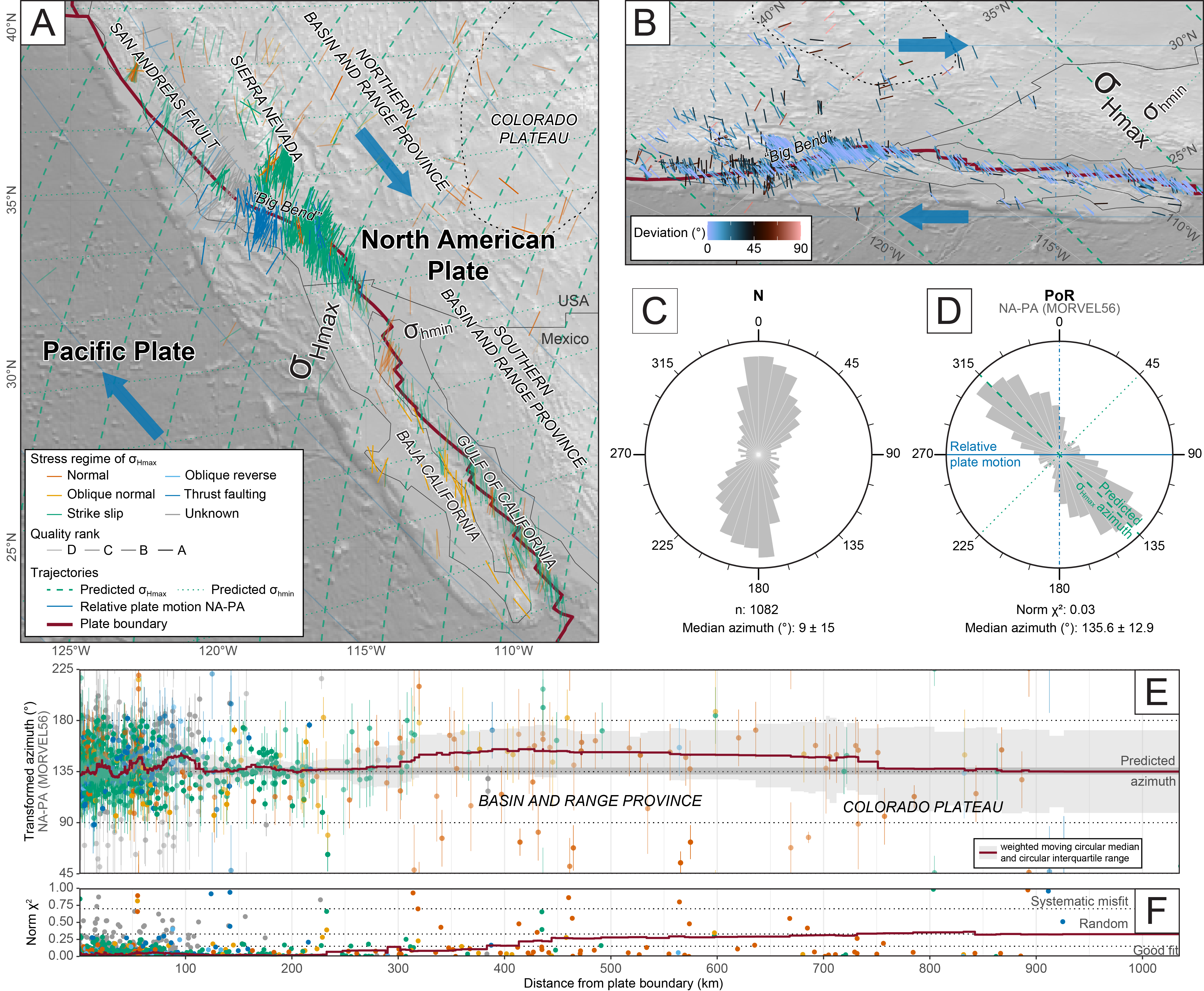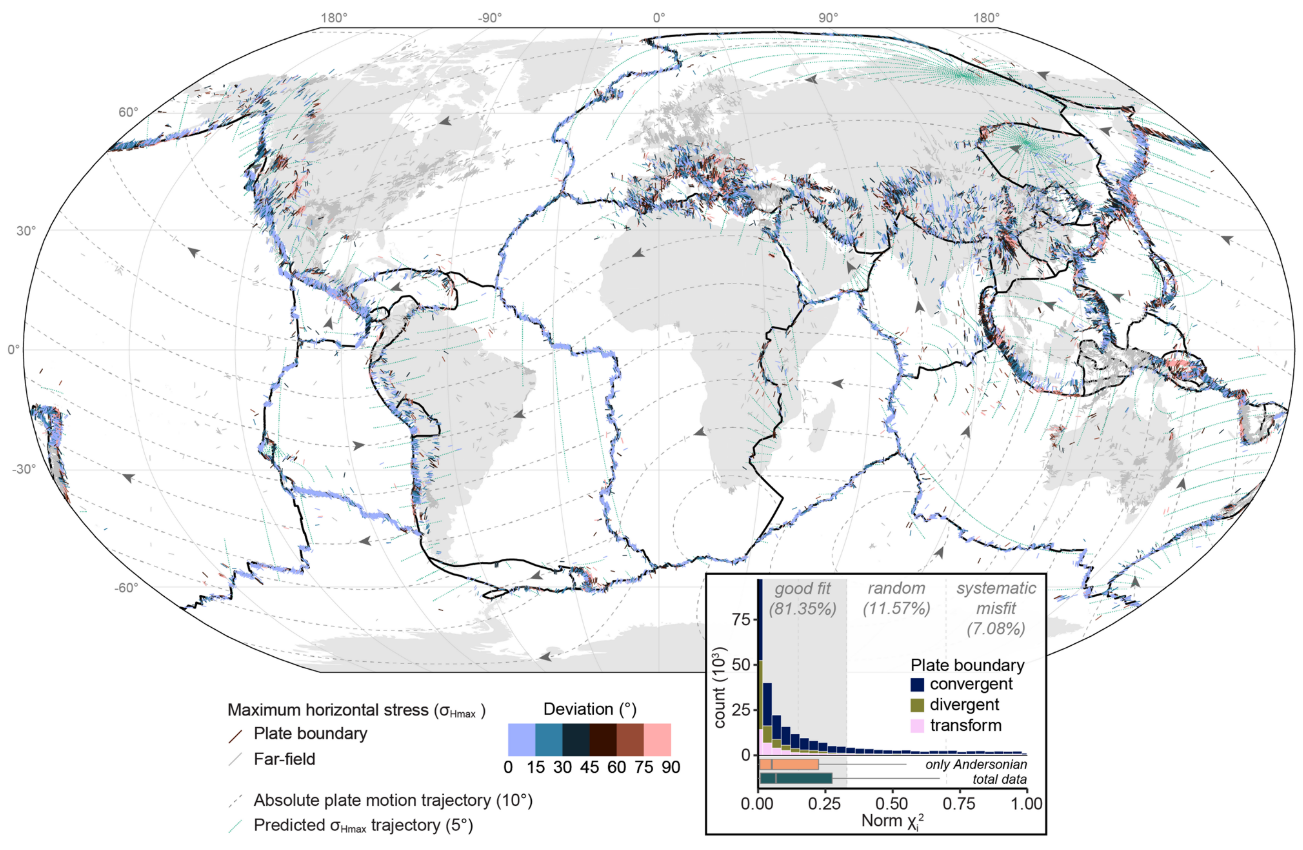Analyzing stress and strain fields
The spherical shape of the Earth curves straight orientations on the Earth’s surface. Thus, a statistical analysis of large tectonic fields, such as stress and strain, is challenging as long as there is no reference system. In this project, we analyse these fields with respect to the first-order source, plate boundary forces.
AI-generated1 audio summary

Since these forces are at an angular relationship to the plate motion between two plate, the pole of rotation serves as an new reference system. Plate motion parameters are easy to determine and the new reference system also allows for testing and predicting stress fields. This is in particular useful in areas where stress and strain data are not available (Stephan & Enkelmann, 2025). And the method can be applied for paleo-stress fields if the relative plate motion from plate reconstructions is known.
My work in usable statistical tools for stress/strain orientations is nascent, but follows from my existing work in improving statistical communication in the fields of structural geology and plate motion reconstruction.

References
Footnotes
generated using Google NotebookLM↩︎